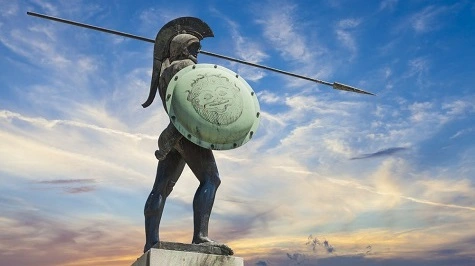
Ancient History
Ancient history is replete with fascinating people and society doing extraordinary things like building pyramids in Egypt, creating the Greek gods of Olympus or building empires in Rome. Meet kings and queens, despots and dictators, foot soldiers and slaves. Discover and unpack the great works of great minds like Confucius, Ptolemy, Homer and Aristotle. See how our present rests on the giant shoulders of the past.
Available Classes
The Kurds
<p>The Kurds have been around as a discreet ethnic group for millennia. At times dominant, at other times subject to neighbours, they continue to survive. There problem in modern times is that they
...The Kurds
<p>The Kurds have been around as a discreet ethnic group for millennia. At times dominant, at other times subject to neighbours, they continue to survive. There problem in modern times is that they
...Available Classes
Collapse of the Pax Romana
<p>The vastness of the Roman empire challenged the very best of the emperors such as Trajan, Hadrian and Marcus Aurelius. The accession of Commodus in 193 AD signalled the end of the Pax Romana. Civil
...Available Classes
Circling Death - the World of the Roman Arena
<p>Arguably the most archetypical image of Rome is that of the gladiator fighting in the arena. The “sword and sandal” epics of popular culture often emphasise the amphitheatre as a place of Christian
...Available Classes
Indus to India - The Journey of an Old Civilisation
<p>South Asia is the land which gave birth to one of the world’s oldest civilisations – the Indus Valley civilisation, which was expanded all over the north-western part of the Indian subcontinent
...

Indus to India - The Journey of an Old Civilisation
<p>South Asia is the land which gave birth to one of the world’s oldest civilisations – the Indus Valley civilisation, which was expanded all over the north-western part of the Indian subcontinent
...

Available Classes
Egypt in the Pyramid Age
<p>The pyramids of ancient Egypt remain some of the world’s greatest and most enduring monumental achievements. For some three hundred years, pyramids were built to house the mortal remains of
...Egypt in the Pyramid Age
<p>The pyramids of ancient Egypt remain some of the world’s greatest and most enduring monumental achievements. For some three hundred years, pyramids were built to house the mortal remains of
...Available Classes
Voices from Ancient Egypt
<p>The written word is ubiquitous across ancient Egyptian monuments and on many papyri. This well-preserved corpus of ancient literature gives first-hand insight into Egyptian thought and lives.
...Voices from Ancient Egypt
<p>The written word is ubiquitous across ancient Egyptian monuments and on many papyri. This well-preserved corpus of ancient literature gives first-hand insight into Egyptian thought and lives.
...Available Classes
Empires of China and Rome - Legends and Legacy
<p>Two of the largest and longest empires in world history - the Chinese Empire (221 BC–1912 AD) and the Roman Empire (27 BC–1453 AD) - developed independently at the East and West sides of Eurasia,
...

Available Classes
A Tale of Three Cities - Daily Life in Ancient Egypt
<p>Take a walk through the three ancient Egyptian cities of Elephantine, Deir el Medina, and Piramesse. From the architecture of houses, to diet, occupation and recreation, administration, and
...

A Tale of Three Cities - Daily Life in Ancient Egypt
<p>Take a walk through the three ancient Egyptian cities of Elephantine, Deir el Medina, and Piramesse. From the architecture of houses, to diet, occupation and recreation, administration, and
...



